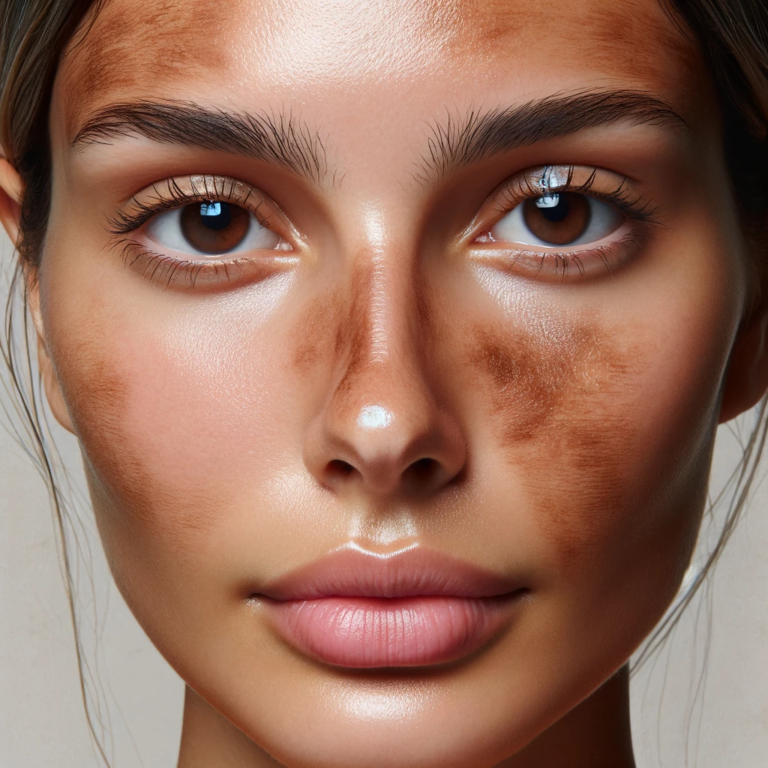
Uneven skin tone is a common concern that affects many people. Whether it’s dark spots, post-inflammatory hyperpigmentation, or other types of uneven skin tone, achieving a more even skin tone can significantly enhance your appearance and boost your confidence. In this blog, we will explore what causes uneven skin tone and provide practical tips on how to even out your skin.
What is Uneven Skin tone?

Have you ever glanced in the mirror and noticed that your skin appears patchy or uneven? This common issue, known as uneven skin tone, can be frustrating and affect your confidence. But don’t worry, we’re here to provide you with the essential knowledge to understand and manage this condition effectively.
Uneven skin tone can manifest in several ways. You might notice skin discoloration where certain areas of your skin appear darker or lighter than the surrounding areas. This is more than just a cosmetic concern; recognizing these signs early can help you address the issue before it worsens. By identifying skin discoloration, you avoid the confusion and worry that often come with unexplained skin changes.
In addition to discoloration, uneven skin tone can also present as a change in skin texture. If your skin feels rough or spotty in certain areas, these could be early indicators of an uneven skin tone. Understanding these texture changes allows you to take timely action, preventing further skin damage and ensuring your skin remains healthy and smooth.
The affected areas of uneven skin tone are usually visibly distinct from the surrounding skin, often marked by dark patterns or different coloring. This makes it easier to spot and recognize problematic areas, helping you avoid neglecting necessary skincare routines. By being aware of these visible signs, you can avoid ineffective skincare solutions and focus on what truly works for your skin.
Another key characteristic of uneven skin tone is a rough or spotty texture. Recognizing this feature means you can address texture-related issues early, ensuring your skincare routine is effective and tailored to your needs. By understanding the importance of texture, you avoid the trial and error of unsuitable products and can achieve a smoother, more even complexion.
Understanding and identifying uneven skin tone is the first step towards healthier, more balanced skin. By paying attention to these features—skin discoloration, texture changes, and visibly distinct areas—you can effectively manage and improve your skin’s appearance. Say goodbye to the guesswork and frustration of uneven skin tone and hello to a more confident, radiant you.
what is the reason for uneven skin tone?
Sun Damage

Sun exposure is one of the primary causes of uneven skin tone. The sun’s harmful UV rays can damage the skin, leading to the appearance of dark spots and hyperpigmentation. Prolonged exposure can cause sun damage, resulting in an uneven skin tone that becomes more pronounced over time.
Use Sunscreen
To protect your skin from sun damage, it’s essential to apply sunscreen every day. Sunscreen can help prevent further sun exposure, which can lead to an uneven skin tone. Using sunscreen with a high SPF can also protect your skin from the harmful effects of UV rays, helping you maintain a more even skin tone.
Skin Damage
Skin damage, such as that caused by acne, can lead to post-inflammatory hyperpigmentation. This type of hyperpigmentation appears as dark spots or patches on the skin and can be difficult to treat. The skin’s healing process can result in uneven skin tones that are noticeable and persistent.
Dry Skin
Dry skin can contribute to an uneven skin tone. When your skin is dry, it can become flaky and rough, leading to an uneven texture and tone. Moisturizing regularly can help keep your skin hydrated and smooth, reducing the appearance of uneven skin tone.
How to Get Rid of Uneven Skin Tone
There are several ways to treat uneven skin tone and achieve a more even complexion:
- Exfoliate Regularly: Exfoliating helps remove dead skin cells that can contribute to an uneven skin tone. Use products containing glycolic acid or other gentle exfoliants to improve your skin’s texture.
- Use Vitamin C: Vitamin C is known for its brightening properties and can help even out the skin tone. Incorporate vitamin C serum into your skincare routine to reduce the appearance of dark spots and hyperpigmentation.
- Apply Sunscreen Every Day: As mentioned earlier, using sunscreen every day is crucial for preventing further sun damage and maintaining an even skin tone.
- Hydrate Your Skin: Keeping your skin hydrated with a good moisturizer can help reduce dryness and improve your skin’s texture.
- Consult a Dermatologist: If you have persistent uneven skin tone, it’s best to consult a dermatologist. They can recommend treatments such as chemical peels, laser therapy, or prescription creams that can help even out your skin tone.
Causes of Uneven Skin Tone
Uneven skin tone is caused by various factors, including:
Sun Exposure: Prolonged exposure to the sun can lead to sun damage and hyperpigmentation.
Skin Type: Some skin types are more prone to developing uneven skin tones.
Age Spots: As you age, you may develop age spots, which can contribute to an uneven skin tone.
Post-Inflammatory Hyperpigmentation: Skin injuries, such as acne or cuts, can lead to hyperpigmentation and uneven skin tone.
Conclusion
Achieving an even skin tone requires a consistent skincare routine and protection from the sun. By understanding the causes of uneven skin tone and following the tips mentioned above, you can improve the appearance of your skin and achieve a more even complexion. Remember to use sunscreen every day, exfoliate regularly, and consult a dermatologist if needed to help you on your journey to even skin tone.
